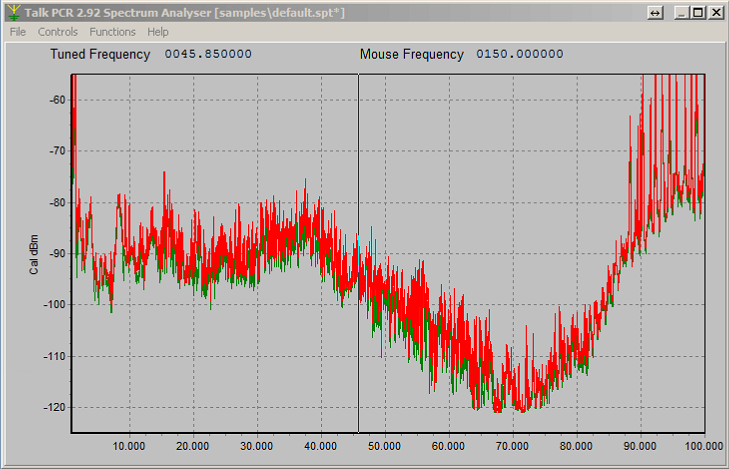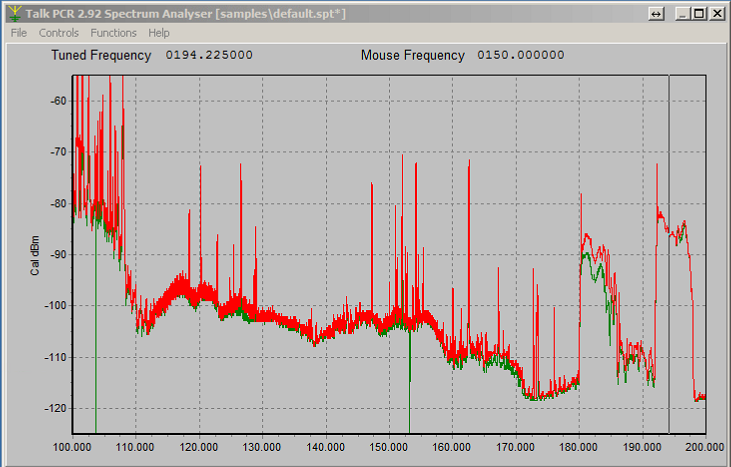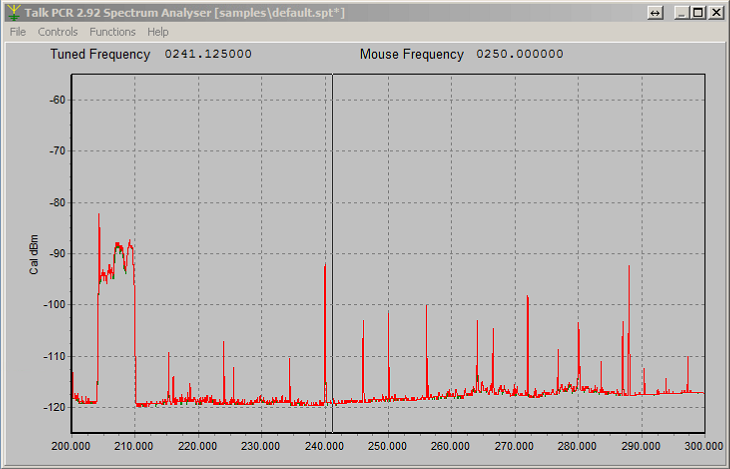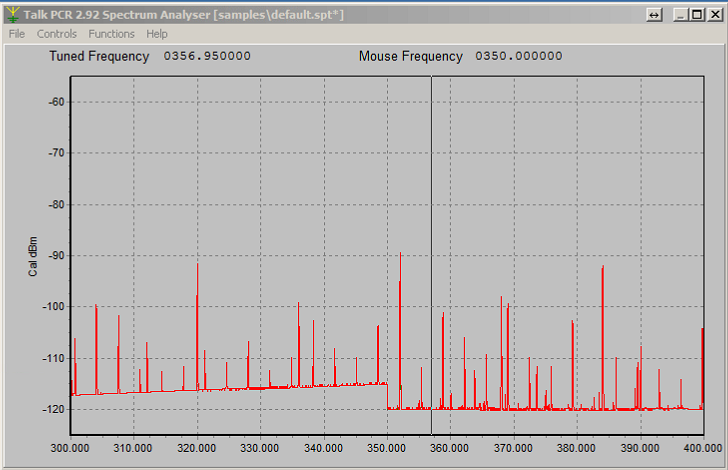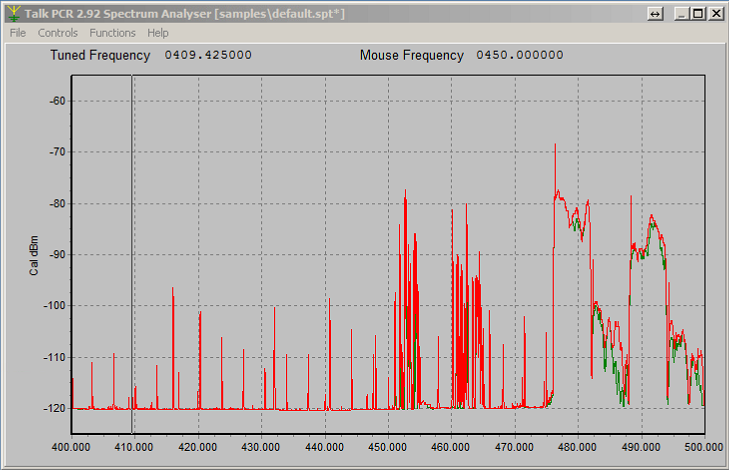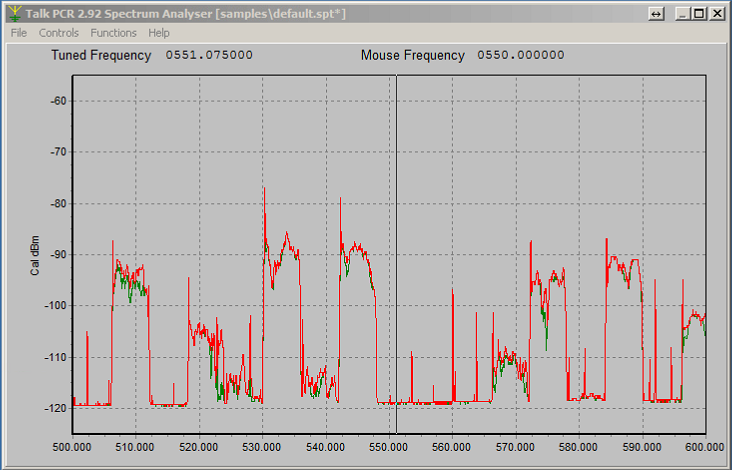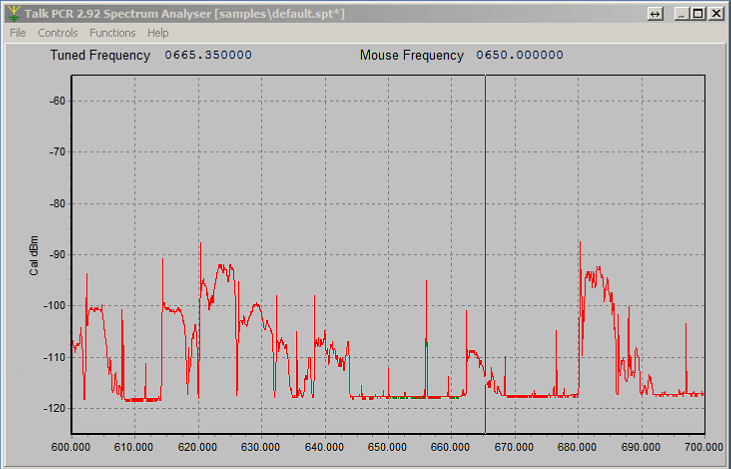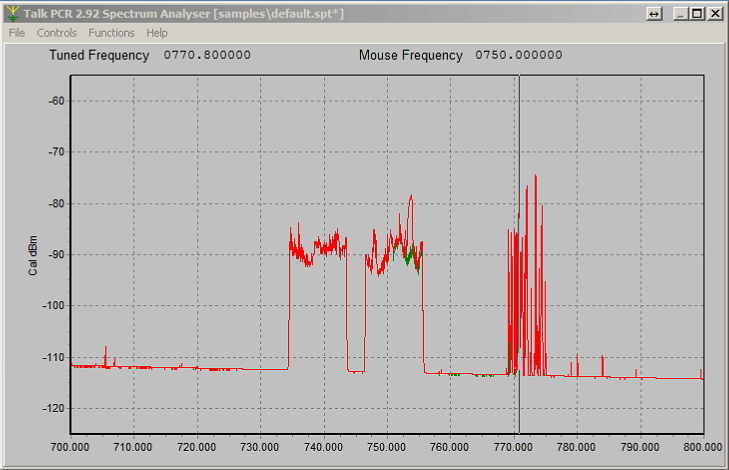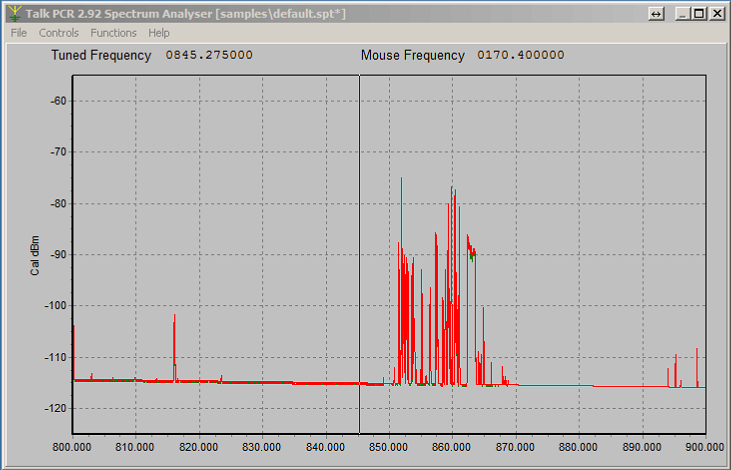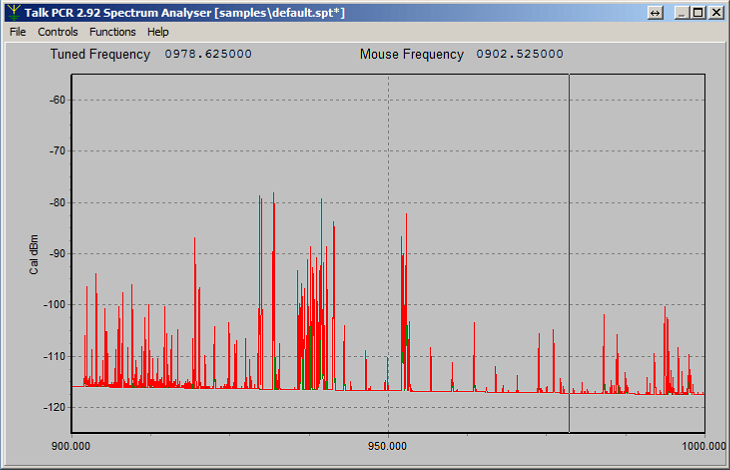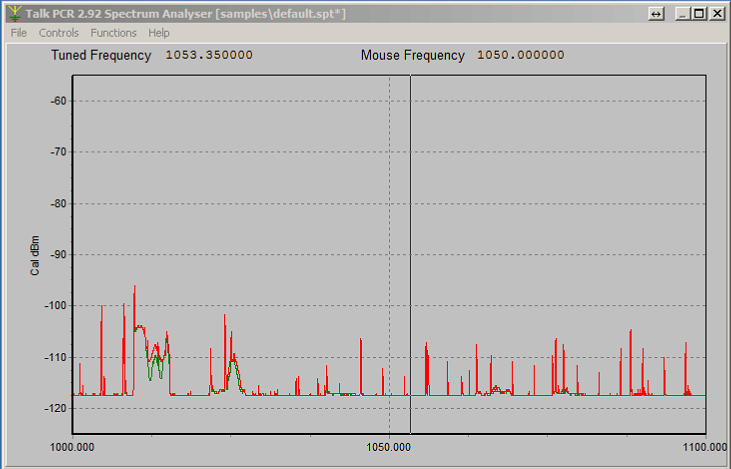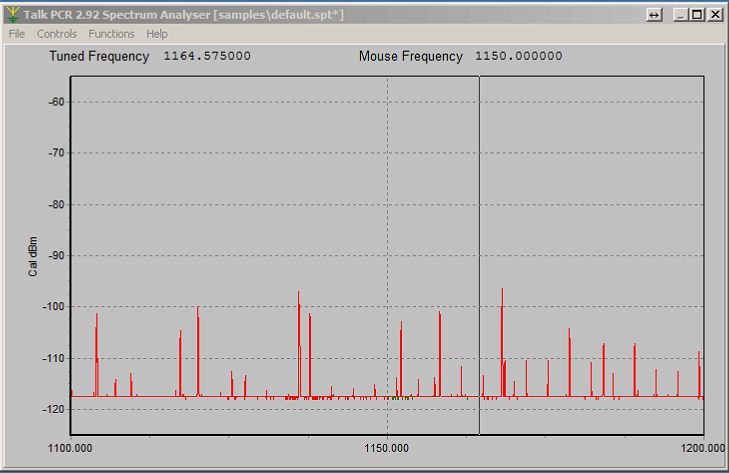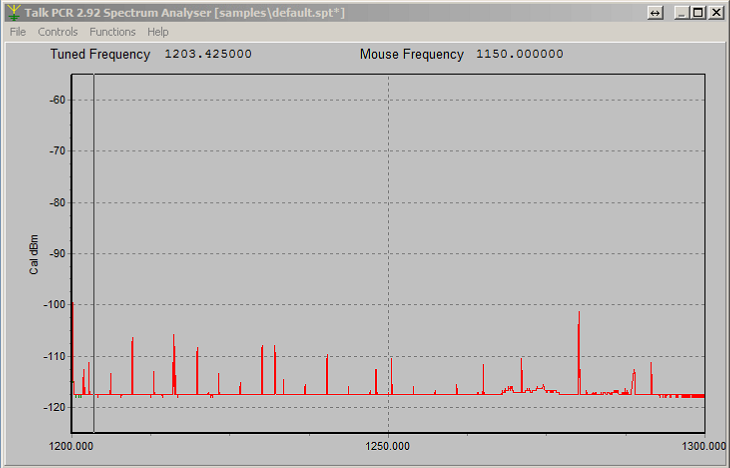Interested in installing a low-noise wideband amp on the rooftop discone to allow me to aggregate together a bunch of receivers and reduce the amount of clutter in the shack.
I have an old Diamond discone on the roof, only 5 – 6 m above ground, and about 30 m of feedline to bring it down into the shack where all the scanners and other receivers are.
I’d purchased on eBay a super-hot LNA from iseeabluewhale with NF of 0.5 dB at 400 MHz, 20 dB of gain, and a useable bandwidth of 10 – 2000 MHz. Most importantly, it’s got an output IP3 of +42 dBm at 1 GHz, so it should be able to withstand nearly any level of signal that I can throw at it and stay linear.
First thing is to see how noisy the environment is. I set up the Icom PCR-1000 radio to scan frequencies from 1 MHz to 1300 MHz and see what kind of average noise levels I was dealing with out there. The discone is about 1 – 2 dBi or so, the cable loss varies over the frequency span. The Icom was configured to step in 25 kHz increments with a 50 kHz bandwidth.
The antenna is really only competent from about 100 or 120 MHz up, but it has a bottom-loaded coil atop the disk to supposedly get down to about 50 MHz or so.
1 – 100 MHz: No surprise here, the strong signals are all FM broadcast band. Some are exceedingly strong, although I’m pretty sure the closest one is at least 8 km distant. No digital TV signals between 54 and 88 MHz.
100 – 200 MHz: The rest of the FM broadcast band, some peaks in the aviation, 2 m ham, and VHF 150 – 170 MHz bands. The big rectangular humps at the right are digital TV channels 8 and 10.
200 – 300 MHz: Here, there’s just TV channel 12, then it’s pretty quiet beyond, with the noise floor about as low as the Icom can report.
300 – 400 MHz: The innards of the Icom must switch receiver paths or filter setups at 350 MHz, since the floor was rising smoothly and then made the 5 dB step down. Otherwise, it’s pretty quiet still.
400 – 500 MHz: Still quiet, random narrow-band carriers here and there until the 450-470 MHz two-way band, plenty of carriers there, and then TV channels 15 and 17.
500 – 600 MHz: A bunch of TV channels, from left, 20, 22, 24, 26, 30, 31, 33, and the lower edge of 35.
600 – 700 MHz: All DTV still, 36, 38, 39, 40, 41, 42, 46, 47, 49 and 50, and maybe 44, 45, 47, and 48. Otherwise, quiet noise floor.
700 – 800 MHz: Mostly quiet, notice the noise floor’s come up from the last plot, and there’s LTE cellular for Verizon and AT&T.
800 – 900 MHz: In a normal receiver, there’d be all sorts of signals between 824 – 849 and 869 – 894 MHz, but because this receiver is not allowed by law to tune those frequencies (stupid law; nothing to hear but digital noise) there’s nothing there. However, my $10 USB SDR dongle can tune this spectrum, so maybe I’ll look there to see how strong the signals might be.
900 – 1000 MHz: The 902 – 928 MHz part 15/18 band has plenty of small carriers, lots of activity, but it’s all pretty weak. There’s more carriers up in the business bands all the way up to about 960 MHz, then gets quiet again.
1000 – 1100 MHz: Between cable loss and the absorption by foliage, the signals here are all generally pretty weak. Don’t know what that plateau is at about 1015 MHz, or the hump around 1025 MHz. The one at 1015 MHz looks suspiciously like a digital TV carrier… The ADS-B stuff at 1090 MHz barely shows, though there’s hundreds of transmissions per second.
1100 – 1200 MHz: Really not much here that my receiver can detect.
1200 – 1300 MHz: Same here.
So, it appears that the bulk of the stronger signals in range are all FM broadcast or digital TV stuff. FM broadcast really beats everything else. Let’s take a closer look at that next.

